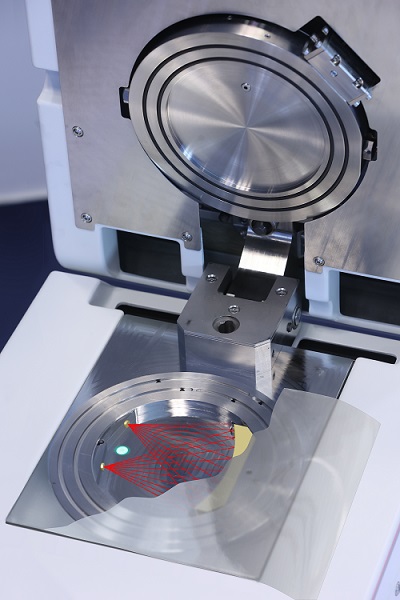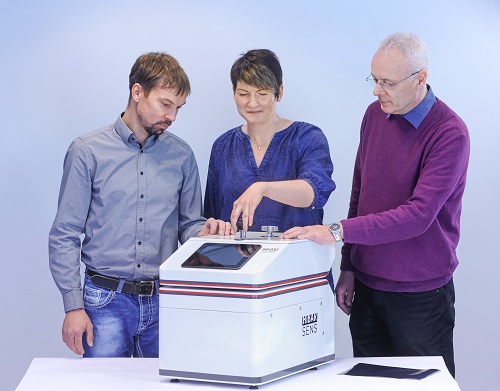Researchers at the Fraunhofer Institute for Material and Beam Technology IWS (Fraunhofer IWS) have developed a measuring technique for reliably determining the permeation rate of films. The method, which the researchers developed as part of the SimPerm project, looks at water vapor and oxygen permeation rates simultaneously — reportedly for the first time, the researchers said.
The technology enables manufacturers, users, and developers of barrier films to determine the gas permeability of barrier films for OLEDs, organic solar cells, tablets, food, and other air-sensitive goods more accurately, realistically, and cost-effectively than before. In addition, the method enables laboratories to perform such permeation measurements for typical air components such as water vapor and oxygen in a single operation and with a single instrument, reducing the capital and operating costs of typical gas permeation testing.
The method enables the simultaneous measurement of water vapor permeation rate (WVTR) and oxygen permeation rate (OTR) in a single device. The researchers combined laser diode spectroscopy for water vapor measurement with dynamic fluorescence quenching for oxygen measurement in a single measuring cell. To achieve a sufficiently low detection limit for the concentration measurement of both permeates, they used nitrogen pulses to precisely control the concentrations of water vapor and oxygen molecules penetrating the barrier layer. The discontinuous nitrogen flow can be controlled precisely through automated opening and closing of valves.

Infrared laser beams and fluorescence quenching can be used to simultaneously investigate the water vapor and oxygen permeability of barrier films. The measurement technique is used in OLED technology, medical technology, and the food industry. Courtesy of Amac Garbe/Fraunhofer IWS.
As a result, even small amounts of permeate accumulate to levels that can be reliably measured by laser spectroscopy or fluorescence quenching detectors, provided that all equilibrium conditions are maintained.
The phase durations of the nitrogen pulses and the intervening permeate accumulation are adjustable to almost any desired value. The detection limits of both WVTR and OTR measurements no longer depend on the sensor used, but on the sealing of the measuring cell.
The Dresden-based institute has filed a patent for the technology. “We expect this method to raise permeation measurement technology to a new level,” said Wulf Grählert, who led the SimPerm project at Fraunhofer IWS.
“The advantages are obvious: We can use it to examine the gas permeability of any barrier films for OLEDs, pharmaceutical products, or medical technology applications, but also for food, much more realistically and thus more reliably, without having to make any compromises in terms of sample size or examination temperature.”

The Dresden-based company Sempa Systems GmbH will offer the market-ready HiBarSens measuring device based on the new technology. From left, Johannes Grübler of Sempa Systems, Susann Kleber of Fraunhofer IWS, and Wulf Grählert of Fraunhofer IWS. Courtesy of Amac Garbe/Fraunhofer IWS.
The approach provides information on the breakthrough behavior of the permeates, showing how quickly, or more accurately, how slowly a given amount of water vapor or oxygen permeates through the barrier. Reliable simultaneous analysis of the permeation properties allows conclusions to be drawn about how the different permeates influence each other during passage through the barrier layers.
Looking further into the future, even more fields of application could open up for the innovative measurement technology. “Cardiac pacemakers and other implants have to be particularly protected against moisture in the body at certain points,” Grählert said.
The technology’s reliable and comprehensive permeation analysis at high sensitivity can facilitate the development of new barrier films in addition, the researchers said.
Dresden-based Sempa Systems GmbH plans to build market-ready measuring systems based on the technology. In addition to Fraunhofer IWS and Sempa Systems, Dresden-based CREAVAC GmbH served as a partner in the joint project SimPerm, which is completed.
The Saxon State Ministry for Economics, Labor, and Transportation funded the project from 2018 to 2022 with €1.3 million ($1.37 million) from European Regional Development funds.